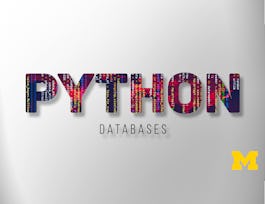SAS Viya is an in-memory distributed environment used to analyze big data quickly and efficiently. In this course, you’ll learn how to use the SAS Viya APIs to take control of SAS Cloud Analytic Services from a Jupyter Notebook using R or Python. You’ll learn to upload data into the cloud, analyze data, and create predictive models with SAS Viya using familiar open source functionality via the SWAT package -- the SAS Scripting Wrapper for Analytics Transfer. You’ll learn how to create both machine learning and deep learning models to tackle a variety of data sets and complex problems. And once SAS Viya has done the heavy lifting, you’ll be able to download data to the client and use native open source syntax to compare results and create graphics.


Using SAS Viya REST APIs with Python and R
Taught in English
3,701 already enrolled
(15 reviews)
Details to know

Add to your LinkedIn profile
23 quizzes
See how employees at top companies are mastering in-demand skills


Earn a career certificate
Add this credential to your LinkedIn profile, resume, or CV
Share it on social media and in your performance review

There are 8 modules in this course
In this module, you meet the instructor and learn about course logistics, such as how to access the software for this course.
What's included
1 video4 readings1 app item
In this module you learn about the analytical processing engine behind SAS Viya, the Cloud Analytic Services server. You also learn how to submit data processing commands to SAS Viya from the open source languages R and Python.
What's included
10 videos5 quizzes1 app item
In this module you learn how to use R and Python to create, optimize, and assess SAS Viya predictive models. You also learn how to use R and Python to efficiently manage the creation and assessment of these models.
What's included
15 videos4 quizzes4 app items
In this module you learn how natural language processing is used to analyze collections of text documents. You also learn how to turn blocks of unstructured text into numeric inputs suitable for predictive modeling.
What's included
9 videos3 quizzes2 app items
In this module you learn how deep learning methods extend traditional neural network models with new options and architectures. You also learn how recurrent neural networks are used to model sequence data like time series and text strings, and how to create these models using R and Python APIs for SAS Viya.
What's included
13 videos3 quizzes2 app items
In this module you learn how to model time series using two popular methods, exponential smoothing and ARIMAX. You also learn how to use the R and Python APIs for SAS Viya to create forecasts using these classical methods and using recurrent neural networks for more complex problems.
What's included
11 videos4 quizzes2 app items
In this module you learn how convolutional neural networks are used to classify images and how to use the R and Python APIs for SAS Viya to create convolutional neural networks.
What's included
7 videos2 quizzes2 app items
In this module you learn how factorization machines are used to create recommendation engines and how to build factorization machine models in SAS Viya using the R and Python APIs.
What's included
4 videos2 quizzes2 app items
Offered by
Recommended if you're interested in Data Analysis

University of Colorado Boulder

Howard University

Howard University

University of Michigan
Why people choose Coursera for their career




Learner reviews
Showing 3 of 15
15 reviews
- 5 stars
86.66%
- 4 stars
6.66%
- 3 stars
0%
- 2 stars
0%
- 1 star
6.66%
Reviewed on Oct 18, 2021
New to Data Analysis? Start here.

Open new doors with Coursera Plus
Unlimited access to 7,000+ world-class courses, hands-on projects, and job-ready certificate programs - all included in your subscription
Advance your career with an online degree
Earn a degree from world-class universities - 100% online
Join over 3,400 global companies that choose Coursera for Business
Upskill your employees to excel in the digital economy
Frequently asked questions
Access to lectures and assignments depends on your type of enrollment. If you take a course in audit mode, you will be able to see most course materials for free. To access graded assignments and to earn a Certificate, you will need to purchase the Certificate experience, during or after your audit. If you don't see the audit option:
The course may not offer an audit option. You can try a Free Trial instead, or apply for Financial Aid.
The course may offer 'Full Course, No Certificate' instead. This option lets you see all course materials, submit required assessments, and get a final grade. This also means that you will not be able to purchase a Certificate experience.
When you purchase a Certificate you get access to all course materials, including graded assignments. Upon completing the course, your electronic Certificate will be added to your Accomplishments page - from there, you can print your Certificate or add it to your LinkedIn profile. If you only want to read and view the course content, you can audit the course for free.
You will be eligible for a full refund until two weeks after your payment date, or (for courses that have just launched) until two weeks after the first session of the course begins, whichever is later. You cannot receive a refund once you’ve earned a Course Certificate, even if you complete the course within the two-week refund period. See our full refund policy.




